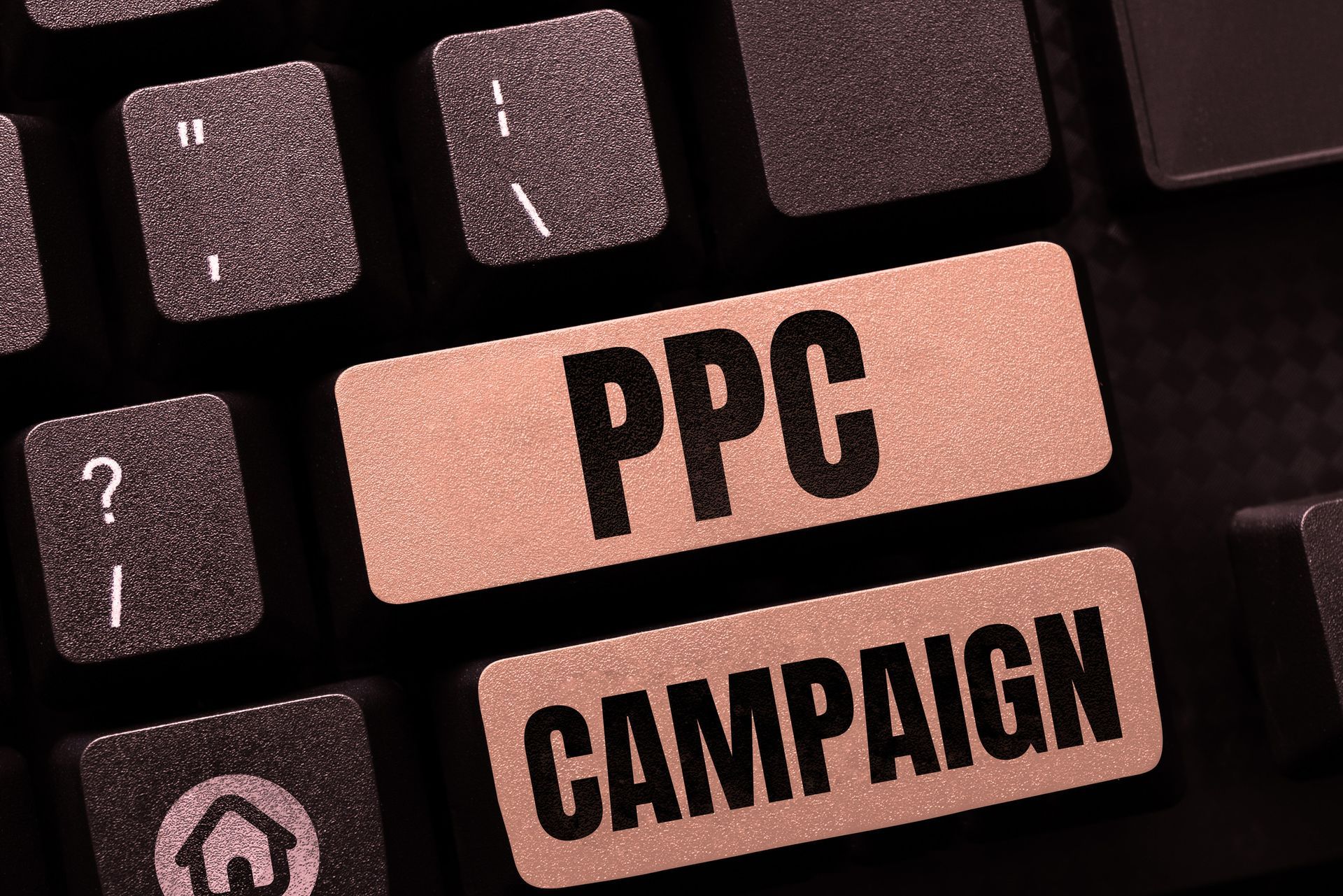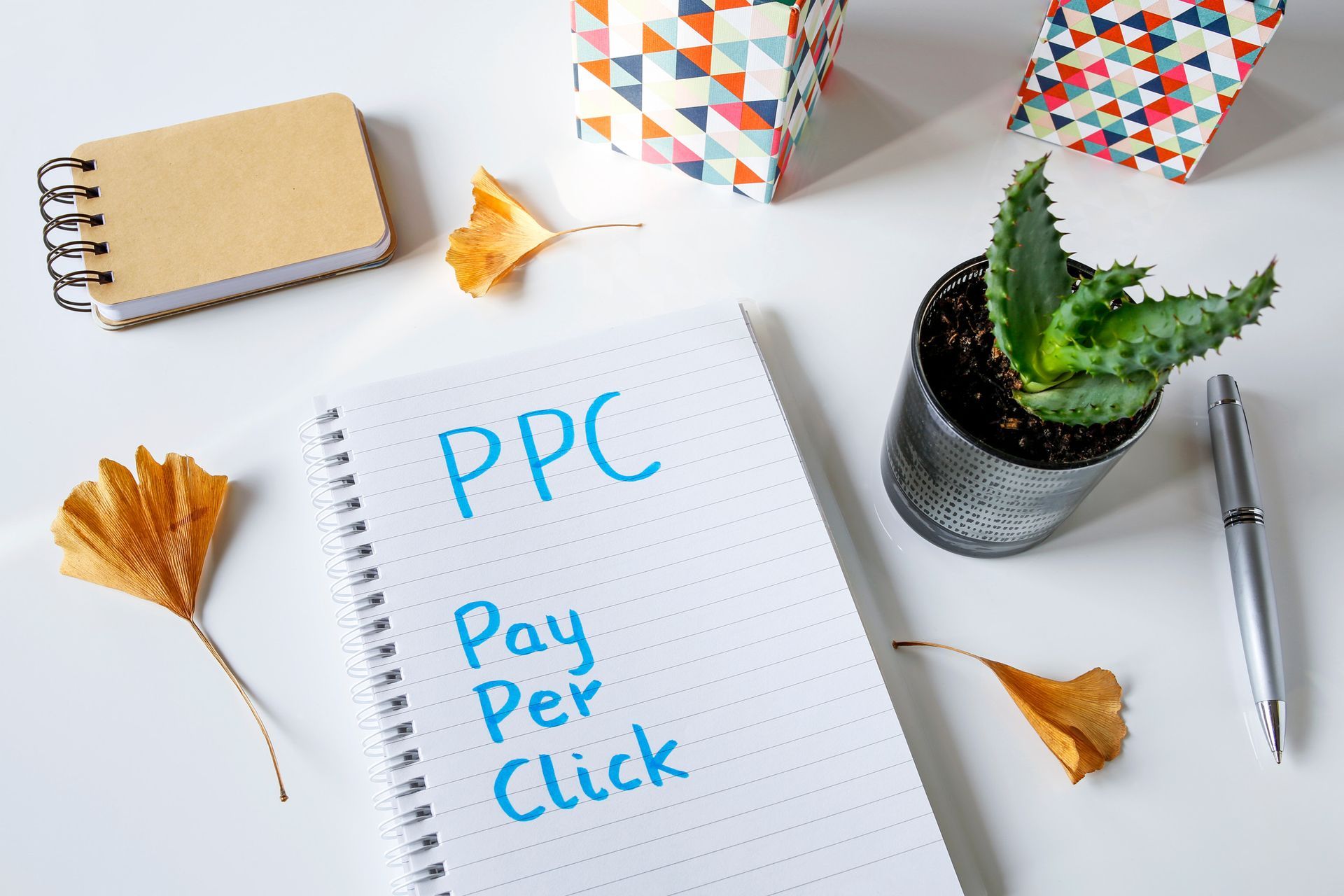Boost Your Business on a Budget: Top Digital Marketing Tools That Won’t Break the Bank
Learn the Secrets to Low-Cost, High-Impact Marketing!

In the bustling world of small business, where every dollar counts and every minute is precious, digital marketing emerges not just as a strategy but as a lifeline. Imagine a local bakery, tucked away in a cozy neighborhood corner. The aroma of freshly baked goods fills the air, but the foot traffic is less than bustling. The owner, Sarah, knows her pastries can rival any in the city, but her delightful shop remains the community's best-kept secret.
That's where digital marketing comes into play. Like Sarah, many small business owners are just a few clicks away from transforming their local gems into widely recognized brands. The digital landscape offers a myriad of tools and techniques that don't require a hefty investment—just a bit of creativity and know-how.
In this post, we're diving deep into the world of cost-effective digital marketing. Whether you're a seasoned entrepreneur or just starting, you'll discover tools that are not only affordable but incredibly effective at capturing the hearts and screens of your target audience. From automating your emails to mastering social media algorithms on a budget, these strategies are designed to give you the best bang for your buck.
Join us as we explore how to stretch your digital dollars further, ensuring that your business doesn't just survive but thrives in the competitive digital arena. Let's make your business the talk of the town—or better yet, the talk of the online world!
Understanding Digital Marketing Budget Constraints
For many small business owners, budgeting is akin to navigating a tightrope. Every decision, especially where to allocate limited resources, can feel like a high-stakes balancing act. Take, for example, Mark, who owns a local craft store. His passion for artisanal products is unmatched, but his advertising budget? Not quite as expansive.
The digital world, while vast and full of potential, can seem daunting when funds are tight. However, the beauty of digital marketing lies in its scalability and flexibility. You can start small, measure your results, and adjust as you go, ensuring you're always getting the most out of every dollar spent. Here are a few tips to keep in mind:
- Set Clear Objectives: Before spending a penny, define what success looks like for your digital marketing efforts. Are you looking to increase website traffic, boost sales, or grow your email list? Setting clear objectives helps you choose the right tools and allocate your budget more effectively.
- Know Your Audience: Spend time understanding who your customers are. What are their needs and behaviors online? This knowledge isn't just power—it's profitable. Targeting your audience more precisely can reduce wasted spend and increase conversion rates.
- Start with Free Tools: There's no shortage of free tools that can give you a strong start without the financial commitment. Tools like Google Analytics provide invaluable insights into your audience and the effectiveness of your marketing efforts, all without cost.
- Prioritize High-Return Activities: Identify which channels and tactics have historically given you or others in your industry the best results. For many, this might be email marketing, which offers an average return of $42 for every $1 spent. Start there and expand as your budget allows.
- Leverage Organic Social Media: Building a presence on social media doesn’t have to mean big ad spends. Start by creating and sharing valuable content that resonates with your audience. Engage with them actively to build relationships and community.
- Use Content Marketing: Blog posts, how-to guides, and videos are cost-effective ways to engage customers. They provide value to your audience while establishing your expertise and improving your search engine ranking, which drives organic traffic to your site.
As small business owners like Mark have found, understanding and adapting to budget constraints isn’t just about cutting costs—it’s about making smarter decisions that yield greater returns. In our next sections, we'll dive into specific tools and strategies that help you do just that, even on a shoestring budget.
Email Marketing on a Budget
In the digital marketplace, email marketing stands out for its exceptional return on investment. Small businesses, in particular, can leverage this tool to foster deeper connections and drive sales without the need for a hefty marketing budget. Here’s how to optimize your email marketing strategy effectively:
- Select the Right Platform: Begin by choosing an email marketing service that suits your needs without straining your budget. Services like Mailchimp and Sendinblue not only offer free starter plans but also feature a range of tools that help automate and analyze your email campaigns.
- Build and Segment Your List: Focus on organically growing your subscriber list by offering value—like exclusive content or discounts—in exchange for email sign-ups. Once you have a list, segment it based on user behavior or demographics to tailor your emails and increase relevance and engagement.
- Personalize and Localize Content: Personalization extends beyond using a customer’s name. Tailor content based on individual preferences, previous interactions, and even local events or holidays. This approach enhances engagement and can transform generic messages into personalized experiences.
- Optimize for Mobile: With the majority of users checking email on mobile devices, ensure your emails are designed to be mobile-friendly. Responsive designs adjust to various screen sizes, improving readability and user experience.
- Craft Compelling Subject Lines and CTAs: Use engaging, action-oriented language in your subject lines to grab attention quickly. Your emails should also include clear, compelling calls to action that guide recipients on what to do next, whether it’s making a purchase, signing up for a webinar, or following you on social media.
- Schedule and Automate: Utilize scheduling tools to send emails at times when your audience is most likely to engage. Automation can help manage repetitive tasks, such as sending welcome emails or follow-up messages after a purchase.
- Incorporate Storytelling: Share customer success stories, behind-the-scenes content, or the history of your business to make your communications engaging and memorable. Stories resonate more deeply than standard marketing pitches and can lead to higher engagement rates.
- Test, Analyze, and Adapt: Regularly test different aspects of your emails, from layouts to headlines, to see what works best. Use analytics to track performance and adapt your strategy based on what the data tells you about your audience’s preferences and behaviors.
- Maintain a Clean List: Regularly clean up your email list to remove inactive subscribers. This not only helps in maintaining a healthy sender reputation but also improves the accuracy of your campaign analytics.
With these enhanced email marketing strategies, small business owners can not only stretch their marketing dollars further but also build lasting relationships with their customers. By effectively utilizing email as a personal, direct communication tool, you can boost engagement and drive conversions without a large financial outlay. Remember, the key to successful email marketing is a blend of creativity, personalization, and strategic analysis.
As you refine your email marketing approach, it's vital to complement these efforts with a robust social media strategy. Next, we will delve into social media management, where you’ll learn how to use different platforms to further expand your reach and strengthen your digital presence—all within a budget that suits your small business needs.
Social Media Management
Navigating the ever-changing landscape of social media can be daunting for small business owners. However, with the right strategies and tools, social media can be a cost-effective way to enhance your brand's presence and engage directly with your customers. Here’s how to manage your social media efforts without breaking the bank:
- Choose Your Platforms Wisely: Not all social media platforms are suitable for every business. Identify where your target audience spends most of their time. For example, if you're a B2B company, LinkedIn might be more beneficial than TikTok. Focus your efforts on platforms that align with your audience's preferences and your business goals.
- Use Efficient Management Tools: Tools like Buffer, Hootsuite, and Later allow you to schedule posts, engage with followers, and analyze social media performance from a single dashboard. Many of these tools offer free plans or affordable options that are perfect for small businesses looking to manage multiple accounts seamlessly.
- Create a Content Calendar: Planning your content in advance helps maintain a consistent posting schedule and ensures that your social media activity aligns with other marketing efforts. A content calendar helps you organize seasonal promotions, important business updates, and regular content that engages your audience.
- Leverage User-Generated Content: Encourage your customers to share their own stories and photos using your products or services. User-generated content not only adds authenticity to your brand but also provides you with free, credible material that can enhance your social media presence.
- Engage Regularly and Authentically: Social media is not just about posting; it's about creating conversations and building relationships. Respond to comments, participate in discussions, and engage with other users’ content. Authentic interaction not only boosts your engagement rates but also fosters loyalty and trust among your followers.
- Optimize for Engagement: Use engaging visuals and compelling captions that encourage interaction. Ask questions, run polls, or start challenges that prompt users to comment, like, and share. Engagement is a key metric that platforms use to determine how widely your content is distributed.
- Monitor Trends and Adapt: Social media trends can change rapidly. Stay updated on the latest hashtags, content formats, and platform updates. Adapting to these trends can help you maintain relevance and engagement with your audience.
- Analyze and Refine Your Strategy: Most social media platforms provide analytics that can offer insights into what types of content perform best, when your audience is online, and how they interact with your posts. Use this data to refine your strategy and improve the effectiveness of your social media efforts.
By strategically applying these social media management tips, small business owners can effectively amplify their online presence and foster deeper connections with their audience, all while adhering to a modest budget. This guide not only arms you with practical tools and insights but also ensures that you can navigate the complex social media landscape with confidence and creativity.
As you master your social media strategy, the next logical step is to enhance how you engage with potential customers through your content. In the following section, we'll explore cost-effective tools and tactics for creating compelling content that captures attention and drives engagement, ensuring your digital marketing efforts are both impactful and efficient.
Content Creation and Management
Content is the cornerstone of digital marketing, providing the substance that attracts and retains customer attention online. For small businesses, creating high-quality, engaging content doesn't have to break the bank. Here’s how you can produce and manage compelling content effectively:
- Utilize Cost-Effective Creation Tools: Tools like Canva make graphic design accessible to non-designers, offering templates for everything from social media posts to flyers, all at little to no cost. Similarly, platforms like WordPress provide a user-friendly interface for blogging, supported by a plethora of free plugins that enhance functionality and design.
- Focus on Quality Over Quantity: It's better to publish high-quality content less frequently than to overwhelm your audience with subpar material. Invest time in creating informative, engaging posts that provide real value. This builds your reputation as a reliable source and encourages more shares and interactions.
- Repurpose Content Across Platforms: Maximize the reach and utility of your content by repurposing it. A blog post can be transformed into a series of social media posts, an infographic, or even a short video. This not only saves time and resources but also ensures your message resonates across different mediums.
- Leverage SEO Best Practices: Optimize your content for search engines by focusing on keywords relevant to your audience, using meta descriptions, and creating quality backlinks. This increases your visibility and attracts organic traffic to your site.
- Engage with User-Generated Content: Encourage your followers to contribute content related to your brand. This can include testimonials, photos, or guest posts, which not only reduces your content creation burden but also enhances authenticity and trust with your audience.
- Schedule and Plan Content in Advance: Use content calendars to plan your publishing schedule. This helps you align your content with key business dates, promotions, or cultural events, ensuring a strategic approach to content delivery.
- Analyze Content Performance: Regularly review the performance of your content to understand what works and what doesn’t. Tools like Google Analytics can provide insights into how your content is performing in terms of engagement, reach, and conversion. Use this data to refine your content strategy and improve future outputs.
By implementing these strategies, small businesses can create and manage content that not only captivates and educates but also drives engagement and conversions. Effective content management is about being resourceful and strategic, making the most of the tools and platforms available to you.
Transitioning from content creation to the next crucial component of your digital marketing strategy, we'll explore how small businesses can execute cost-effective advertising campaigns. The next section will delve into running ad campaigns that are both impactful and budget-friendly, ensuring you get the most out of every marketing dollar spent.
Running Cost-Effective Ad Campaigns
Navigating the world of online advertising can seem daunting, especially when budget constraints are tight. However, with the right approach, small businesses can leverage ad campaigns that are not only affordable but also highly effective. Here’s how you can maximize the impact of your advertising dollars:
- Define Your Advertising Goals: Start by clearly defining what you want to achieve with your ad campaigns. Whether it's increasing brand awareness, driving traffic to your website, or boosting sales, having clear goals helps you design more targeted and effective ads.
- Choose the Right Platforms: Not all advertising platforms are created equal, especially when it comes to cost and audience. For instance, Google Ads might be ideal for reaching a wide audience through search, while Facebook Ads provide powerful targeting options for a more defined audience demographic. Consider where your customers are most likely to be and what platforms offer the best ROI for your specific goals.
- Utilize Targeted Advertising: Make use of the sophisticated targeting options available on platforms like Facebook and Google. You can target users based on demographics, interests, behaviors, and more. This precision helps ensure that your ads are seen by the people most likely to be interested in your products or services, reducing wasted expenditure.
- Set a Realistic Budget: Determine what you can afford to spend and stick to it. Most platforms allow you to set daily or campaign limits, so you never exceed your budget. Start small, test your ads, and gradually increase your spending as you begin to see results.
- Create Compelling Ad Content: Your ad’s content needs to grab attention and compel action. Use high-quality images or videos and clear, concise messaging. Highlight what sets your business apart, such as unique features, competitive pricing, or excellent customer service.
- Test and Optimize: Don’t settle for your first draft of an ad. Run A/B tests to compare different versions of your ads to see which performs best. Test different headlines, images, and call to actions. Use the insights gained to refine your approach continuously.
- Monitor and Adjust in Real-Time: One of the advantages of digital advertising is the ability to monitor performance in real-time. Keep an eye on your campaigns and make adjustments as needed, such as tweaking your budget, pausing underperforming ads, or experimenting with new keywords.
- Measure Your Results: Use analytics to measure the success of your ad campaigns against your initial goals. Look at metrics like click-through rates, conversion rates, and ROI. Understanding what metrics are driving your goals will help you make more informed decisions and optimize future campaigns.
- Learn from Each Campaign: Every ad campaign provides valuable lessons. Take the time to analyze what worked and what didn’t, and use this knowledge to improve future campaigns. The digital advertising space is always evolving, and continuous learning will keep you competitive.
By implementing these targeted strategies, small business owners can create ad campaigns that are not only cost-effective but also powerfully effective in achieving their marketing objectives.
As we move from the specific tactics of digital advertising to a broader strategy, the next section will focus on leveraging analytics to maximize the ROI of your overall marketing efforts. Understanding and acting on data from your campaigns is crucial for refining your approach and ensuring your marketing budget is spent wisely.
Leveraging Analytics to Maximize ROI
Understanding and utilizing analytics is essential for small businesses aiming to refine their marketing strategies and enhance their return on investment. Analytics can help you see not just how your campaigns are performing but why they are performing in a particular way. Here’s how you can effectively use analytics to drive your marketing decisions:
- Start with the Right Tools: Google Analytics is a powerful, free tool that can track website traffic, user behavior, and campaign performance. Similarly, social media platforms offer their own analytics dashboards that provide insights into post performance and audience demographics. Familiarize yourself with these tools and integrate them into your regular marketing activities.
- Set Up Goals and Tracking: Define specific, measurable goals in your analytics tools, such as tracking conversions, sales, or specific actions taken on your website. This could involve setting up conversion tracking in Google Ads or using UTM parameters to track the effectiveness of different marketing campaigns.
- Monitor Key Performance Indicators (KPIs): Identify which metrics are most important to your business goals. Common KPIs include website traffic, bounce rates, conversion rates, and cost per acquisition. Regularly monitoring these can help you understand what’s working and what’s not.
- Segment Your Data: Break down your data to analyze specific segments such as traffic sources, user demographics, or behavior on your site. This can reveal insights like which advertising platforms are driving the most valuable traffic or which demographic segments are most likely to convert.
- Use Data to Inform Decisions: Let analytics guide your marketing choices. If data shows that certain types of content generate more engagement, produce more of that content. If certain ad campaigns have high conversion rates, increase your budget there. Conversely, cut back on areas that are not performing well.
- Test and Optimize Continuously: Use analytics to test different approaches in your marketing. For example, A/B testing different landing pages can tell you which elements convert visitors better. Apply what you learn to refine both current and future campaigns.
- Generate Reports and Share Insights: Regularly review your analytics and generate reports that can help you and your team understand performance trends over time. Sharing these insights can help ensure that everyone involved in your marketing efforts is informed and aligned on strategy adjustments.
- Stay Updated on Analytics Trends: The field of analytics is continuously evolving, with new tools and methods being developed. Keeping abreast of these changes can provide you with a competitive edge and help you make more data-driven decisions.
By effectively leveraging analytics, small businesses can ensure that their marketing efforts are not just guesses but well-informed decisions that continually improve and adapt to their audience’s needs.
As we conclude our exploration of digital marketing strategies, it’s important to reflect on the integration of these tactics—from email marketing to analytics—and the cohesive strategy they form when used together. This comprehensive approach ensures that every dollar spent is an investment toward growing your business and enhancing your digital presence.
Navigating the digital marketing landscape can be a challenging yet rewarding endeavor for small business owners. By implementing the strategies we've discussed—from optimizing your email marketing campaigns to leveraging analytics—you can significantly enhance your digital presence and achieve measurable growth. However, mastering these tactics takes time, expertise, and a strategic approach.
At Digital Dreamscape Marketing, we understand the unique challenges that small businesses face. Our team is dedicated to helping you implement cost-effective digital marketing solutions that are tailored to your specific needs. Whether you're looking to fine-tune your social media strategy, create compelling content, or get the most out of every advertising dollar, we have the expertise to help you succeed.
Don't navigate this digital journey alone. Let us help you maximize your marketing ROI, reach your target audience more effectively, and achieve your business goals with ease. Contact us today to learn more about how our services can transform your digital marketing efforts and propel your business forward. Together, we can create a customized marketing plan that drives results and grows your business. Let
Digital Dreamscape Marketing be your partner in success!









![How to Set Up and Optimize Google Business Profile in 5 Minutes [2024]](https://lirp.cdn-website.com/0461b649/dms3rep/multi/opt/103417557_m_normal_none-1920w.jpg)
